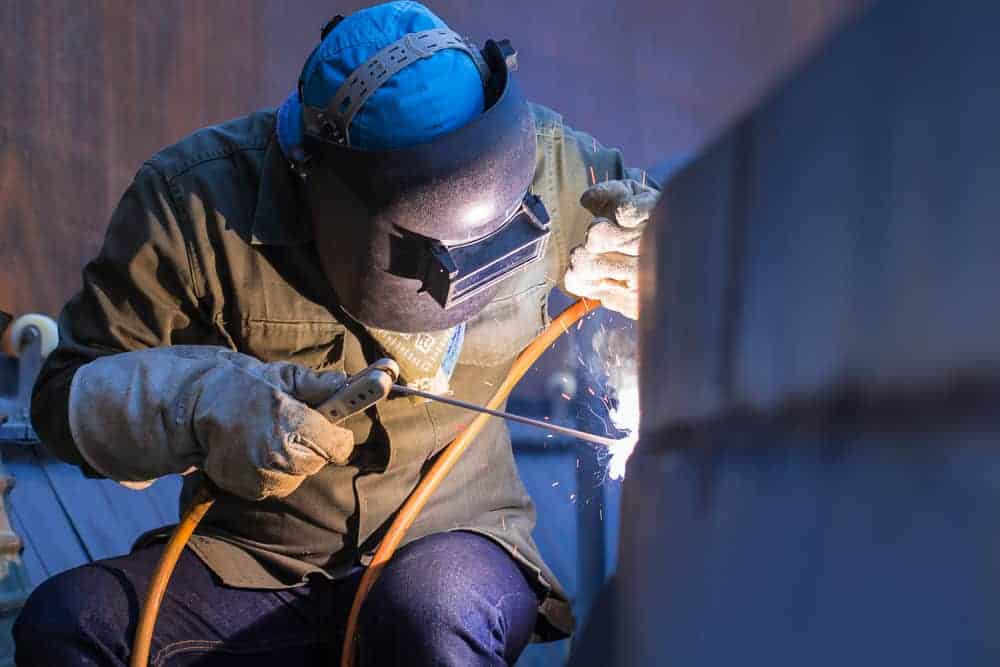Comprehending the Relevance of Welding Inspection in Ensuring Structural Honesty and Safety Across Various Industries
Welding assessment is a crucial process that safeguards structural stability and safety and security throughout varied industries. By meticulously evaluating weld high quality, examiners assist stop issues that might result in catastrophic failures. This organized examination not just reinforces compliance with industry criteria yet likewise plays a crucial duty in maintaining assets and guaranteeing public security. The effects of disregarding appropriate inspection methods are profound, typically causing significant financial and human expenses. As we check out the intricacies of welding examination, the inquiry arises: what are the most important elements that add to reliable evaluation procedures?
Function of Welding Inspection
While the stability of bonded structures is critical to safety and efficiency, the function of welding inspection can not be overstated. Welding assessment acts as a critical quality assurance procedure that ensures the adherence to developed requirements and specifications throughout the welding procedure. By methodically evaluating welds for problems, inconsistencies, and non-compliance, assessors play a vital role in safeguarding the integrity of frameworks across various sectors.
Welding assessments include a variety of tasks, from pre-weld analyses to post-weld examinations. These analyses not just recognize possible concerns prior to they escalate however likewise enhance the total reliability and life-span of bonded components. Welding Inspection Milwaukee. Evaluations help to verify the skill and expertises of welders, guaranteeing that welding procedures are implemented properly and materials work
In addition, an extensive evaluation method fosters conformity with regulatory requirements and market standards, minimizing the danger of catastrophic failings. By promoting a culture of safety and liability, welding evaluation contributes dramatically to both functional and economic efficiencies. Altogether, the function of welding examination is essential, as it underpins the top quality, safety, and durability of welded structures important to modern-day infrastructure and industry.
Kinds Of Welding Evaluations
Comprehending the various kinds of welding assessments is vital for maintaining the quality and safety and security of bonded structures. Welding assessments can be classified into numerous types, each offering a particular objective in the analysis procedure.
Aesthetic examination is the most essential type, entailing a mindful exam of the welds with the nude eye or with magnification. This technique aids determine surface area problems such as cracks, incomplete fusion, or extreme spatter.
Following is non-destructive testing (NDT), which includes methods such as ultrasonic screening, radiographic screening, and magnetic particle testing. These approaches permit examiners to evaluate the integrity of welds without jeopardizing the material's structure. Ultrasonic screening uses high-frequency audio waves to identify inner imperfections, while radiographic testing uses X-rays or gamma rays to picture interior weld qualities. Magnetic bit screening, on the other hand, works for detecting surface and near-surface suspensions in ferromagnetic products.
Damaging testing, though less usual, includes literally examining samples to understand the weld's mechanical buildings. Each sort of examination adds to a detailed evaluation, ensuring that welding fulfills sector standards and security needs.
Sector Criteria and Laws
Establishing sector standards and policies is critical for making certain the security and dependability of bonded frameworks. These criteria act as benchmarks for safety and security, top quality, and performance, directing producers and assessors in the implementation of welding processes. Various companies, such as the American Welding Society (AWS) and the International Company for Standardization (ISO), have created comprehensive requirements that dictate treatments for welding methods, qualification of welders, and evaluation strategies.
Conformity with these laws not just improves the high quality of welds but additionally reduces risks connected with structural failings. Specific codes, such as the ASME Boiler and Stress Vessel Code, rundown requirements for the construction of pressure vessels, guaranteeing they can endure i loved this operational anxieties. Additionally, neighborhood and national guidelines frequently mandate adherence to these sector requirements, enhancing their significance throughout industries like building and construction, aerospace, and vehicle production.
Normal updates to these requirements reflect innovations in technology and welding techniques, making certain that security measures remain pertinent. Hence, an extensive understanding and implementation of these standards is important for welding professionals, cultivating a culture of safety and high quality in welded frameworks.
Consequences of Poor Inspections
Inadequate assessments can cause extreme consequences in the welding market, undermining the extremely policies and standards developed to guarantee safety and structural stability. The effects of inadequate examinations can show up in various forms, from immediate safety and security dangers to long-term structural failings. One of the most startling outcomes is the potential for disastrous accidents, which can cause substantial injury or loss of life. In markets such as aerospace, production, and construction, the effects of ineffective welding can compromise whole frameworks or parts, why not try these out resulting in pricey repairs and substantial downtime (Welding Inspection Milwaukee).
Furthermore, inadequate evaluations can stain a company's reputation and result in lawful effects, including fines and lawsuits. Non-compliance with recognized standards not just endangers the honesty of tasks however likewise lessens customer count on the brand name. In addition, the economic effects can be astonishing, including both straight costs associated to repairs and indirect prices such as lost company chances and raised insurance costs. Eventually, the implications of inadequate inspections prolong beyond individual projects, impacting industry-wide criteria and public perception, therefore stressing the crucial requirement for extensive and effective welding evaluations.
Best Practices for Effective Inspections
Effective welding assessments are paramount to making certain the integrity and safety and security of bonded frameworks. To achieve ideal results, inspectors need to stick to several best practices that boost the examination procedure.
Second of all, inspectors must possess the more required credentials and qualifications appropriate to the welding procedures and materials being taken a look at. Ongoing training and expert development are important to staying upgraded on industry criteria and technical advancements.
In addition, making use of appropriate inspection tools and methods, such as visual assessments, ultrasonic screening, and radiographic examinations, is essential for detecting flaws that could compromise structural stability.
Lastly, comprehensive documents of the assessment procedure is crucial. By implementing these finest methods, companies can significantly boost the performance of their welding examinations and guarantee safe, reputable operations.
Final Thought

Finally, welding assessment is crucial for maintaining architectural integrity and safety and security across numerous sectors. By methodically reviewing welds and adhering to well-known requirements, the inspection procedure mitigates threats connected with defects and non-compliance. The implementation of best techniques in welding inspections not just boosts the integrity and life-span of welded components yet likewise upholds industry regulations. Prioritizing reliable welding assessments is important to ensure the security of workers, properties, and overall functional stability (Welding Inspection Milwaukee).

As we discover the details of welding inspection, the question occurs: what are the most essential aspects that contribute to efficient evaluation processes?
Welding assessment serves as an important top quality control process that guarantees the adherence to established criteria and requirements throughout the welding operation. In amount, the function of welding inspection is important, as it underpins the high quality, safety and security, and longevity of bonded frameworks important to contemporary framework and industry.
Various companies, such as the American Welding Society (AWS) and the International Company for Standardization (ISO), have actually developed detailed standards that dictate treatments for welding methods, credentials of welders, and evaluation strategies.
Eventually, the implications of poor examinations expand past private projects, influencing industry-wide requirements and public understanding, therefore stressing the important demand for rigorous and efficient welding inspections.